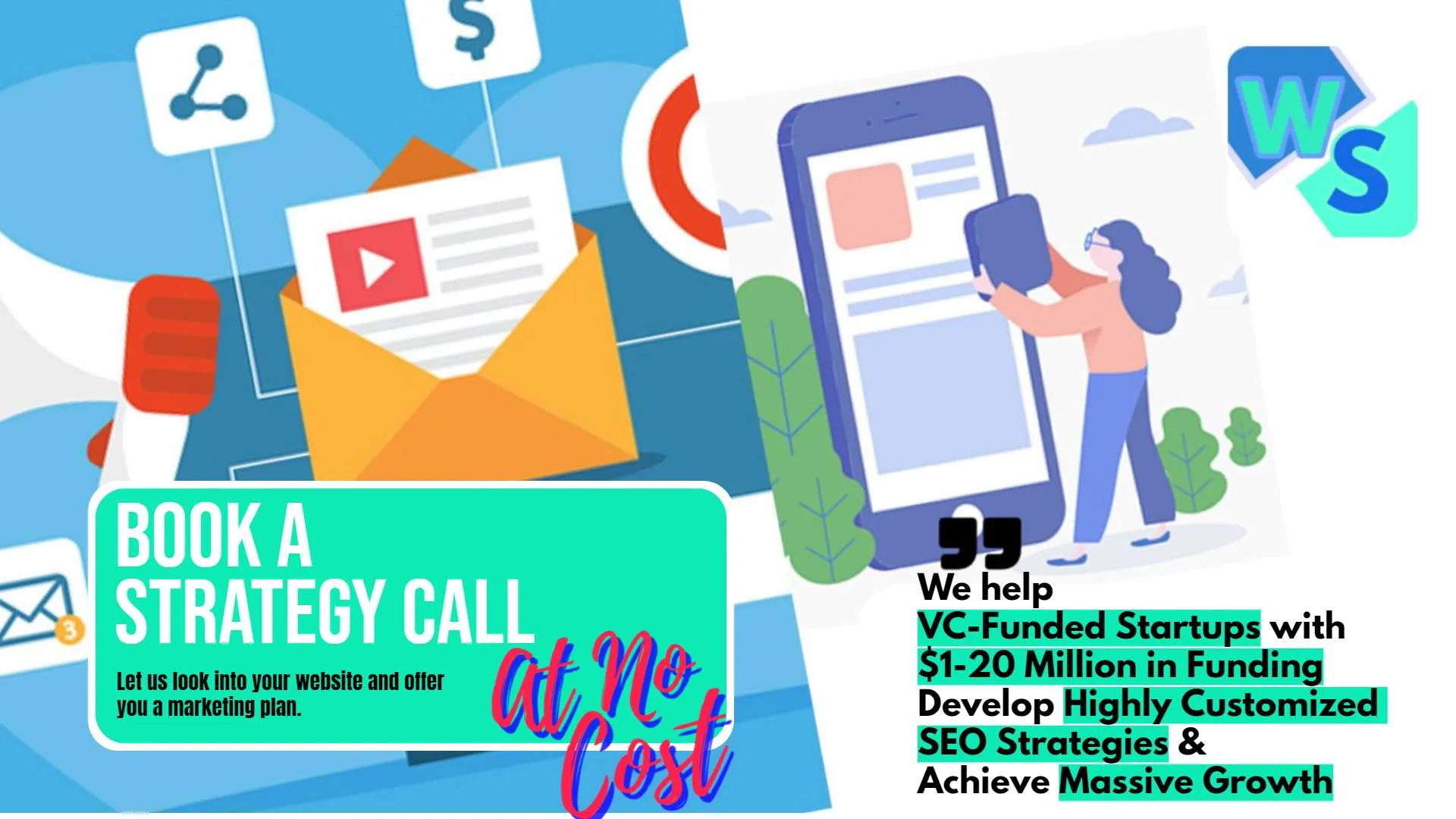With constant shifts in social media algorithms and tightening data privacy rules, brands are increasingly aware of the risks that come with relying too heavily on third-party platforms. Social media can be a fantastic way to reach new audiences, but for long-term, stable growth, there’s a need for more direct lines of communication with customers. That’s where email marketing comes in. Email is one of the most valuable tools at your disposal for connecting with your audience on your own terms.
Creating a powerful email marketing strategy isn’t just about sending newsletters; it’s about building an ongoing relationship with your audience that drives real value for them—and your brand. In this article, we’ll explore how to develop a well-rounded email marketing approach that builds brand loyalty, boosts engagement, and reduces dependency on external platforms. Let’s dive in.
Step 1: Build a Quality Email List from Day One
Attract Subscribers with High-Value Content
To kickstart your email strategy, begin by attracting subscribers in a way that feels natural and valuable to them. People are more likely to share their email address when they know they’re going to get something valuable in return. Start by identifying what your audience values most—whether it’s exclusive insights, special offers, or expert advice—and use that as your “lead magnet” to bring people in.
For example, a fitness brand might offer a free downloadable guide to quick at-home workouts in exchange for an email sign-up. This type of content aligns with their audience’s needs and immediately provides value. Each new subscriber represents a potential long-term customer who’s genuinely interested in what the brand offers.
Make It Easy for Customers to Sign Up
Don’t make your audience hunt for a way to subscribe. Ensure that sign-up options are clearly visible on your website, social media profiles, and even at checkout. Experiment with different placements—such as a sticky header on your site, a pop-up on the home page, or a simple form at the bottom of blog posts—to determine which option drives the most sign-ups without disrupting the user experience.
For instance, a skincare brand might add a “Get 10% Off Your First Purchase” banner at the top of their website with a sign-up link. A clear call-to-action with an incentive makes it easy and enticing for customers to join the email list.
Step 2: Focus on Segmentation and Personalization

Segment Your Audience by Behavior and Interest
One-size-fits-all emails are a thing of the past. To make your email strategy effective, segment your list based on customer behavior, purchase history, or preferences. Segmentation allows you to send emails that feel relevant and timely, increasing the likelihood of engagement and conversions.
For example, an online bookstore might segment its audience into categories like “mystery lovers” or “self-help enthusiasts.” When a new thriller is released, only the “mystery lovers” segment receives the email announcement, making it more likely that the content resonates with their interests.
Personalize the Content to Build a Stronger Connection
Personalization goes beyond simply including a subscriber’s name in an email. Use data on customer interactions, purchase history, and browsing behavior to tailor content. Personalization creates a more engaging experience and demonstrates that you’re paying attention to each customer’s unique preferences, which builds loyalty over time.
For instance, an e-commerce brand might recommend items based on a customer’s recent purchases, or send a birthday discount. These small touches make each customer feel valued and help foster a deeper connection to the brand, keeping them engaged with your emails rather than relying on social media for updates.
Step 3: Craft Value-Driven Content That Keeps Subscribers Engaged
Provide Educational and Entertaining Content
Email marketing is an opportunity to establish yourself as an authority and trusted source of information, not just a promoter of products. Share valuable content that educates or entertains, such as industry insights, tips, or behind-the-scenes stories. When subscribers feel that your emails offer them something of value beyond a sales pitch, they’re more likely to engage with your content regularly.
For example, a nutrition brand might send weekly emails with health tips, recipe ideas, or insights into different ingredients. This kind of content helps position the brand as a go-to resource for wellness, making subscribers look forward to each email rather than seeing it as just another ad.
Use Storytelling to Connect on a Personal Level
Storytelling adds a human touch to your emails. Whether it’s sharing how the brand started, showcasing a customer’s experience, or highlighting the people behind your products, storytelling fosters a personal connection that differentiates your emails from generic marketing messages. Each email becomes a part of your brand’s narrative, inviting subscribers to join your journey.
For instance, a sustainable clothing brand could share stories about the artisans who craft each item, providing insight into their process and the impact of ethical sourcing. These stories not only engage subscribers but also build loyalty by helping them feel connected to the brand’s mission.
Step 4: Optimize for Mobile and User-Friendly Design

Make Your Emails Mobile-Responsive
The majority of people read emails on their phones, so mobile optimization is essential. Use a responsive design that adapts to different screen sizes, and ensure that images and text look clean and legible on mobile. Avoid overcrowding emails with too much text or large images, as this can make it difficult for readers to engage.
For instance, a travel agency might send an email featuring stunning photos of destinations, but ensures each image is optimized for mobile, loading quickly and fitting neatly within the screen. Mobile-friendly emails make for a smoother reading experience, increasing the likelihood that subscribers will read and interact with your content.
Simplify Navigation and Include Clear Calls-to-Action
Cluttered emails with multiple messages can be overwhelming. Each email should have a clear purpose, with a single call-to-action (CTA) that guides the reader to take a specific action. Whether it’s clicking through to read a blog post, redeeming a discount, or shopping a new collection, your CTA should be straightforward and easy to find.
For example, an online jewelry store might send a new collection announcement with a CTA button that simply says, “Shop the Collection.” A concise and compelling CTA helps direct subscribers’ attention, making it more likely that they’ll take action.
Step 5: Use Automation to Enhance the Customer Journey
Set Up Welcome Series for New Subscribers
A welcome series is an automated email sequence that introduces new subscribers to your brand, helping them feel welcomed and valued. Start with a simple greeting, then provide more information about your brand, offer product recommendations, and highlight the benefits of being part of your community. This initial touchpoint sets the tone for a lasting relationship.
For example, a meal delivery service could start with a welcome email that shares the brand’s story, followed by a second email with popular meal options and a third email with a discount code. This gradual onboarding not only educates subscribers but also encourages them to make a first purchase.
Implement Behavioral Triggers for Personalized Follow-Ups
Behavioral triggers are emails that respond to specific actions taken by subscribers, such as viewing a product, abandoning a cart, or making a purchase. These automated follow-ups keep customers engaged by providing timely, relevant content based on their actions.
For instance, if a customer browses a specific product category on your site but doesn’t buy, an automated email could suggest popular products in that category. This approach keeps your brand top-of-mind and guides customers closer to conversion without requiring manual intervention.

Related: Check out our free tools:

Step 6: Regularly Test and Optimize Your Emails for Better Performance
A/B Test Elements to Find What Resonates
A/B testing allows you to experiment with different elements of your emails to see what works best with your audience. Try testing subject lines, image placement, CTA wording, or even send times. Small changes can have a big impact on open rates, click-through rates, and overall engagement.
For example, a home decor brand could test two different subject lines—one highlighting a “New Arrivals” collection and another promoting a limited-time discount. The results of the test reveal which message resonates more, helping the brand refine future emails for higher engagement.
Analyze Key Metrics to Refine Strategy
Tracking and analyzing metrics like open rates, click-through rates, and conversion rates is essential for understanding what works and what doesn’t. Regularly reviewing these metrics helps you identify patterns, allowing you to adjust your approach and improve future campaigns. The more insights you gather, the more you can tailor your emails to better meet your audience’s needs.
For instance, if a clothing brand notices that emails sent on Tuesday mornings have higher open rates than other days, they can adjust their schedule accordingly. This data-driven approach ensures that each email performs at its best, making your campaigns more effective over time.
Step 7: Build Customer Loyalty with Exclusive Offers and Rewards

Offer VIP Discounts and Early Access for Email Subscribers
Rewarding your email subscribers with exclusive offers helps create a sense of loyalty and encourages repeat engagement. Consider giving them early access to new products, VIP discounts, or special promotions that aren’t available to the general public. These perks make subscribers feel valued and appreciated, strengthening their connection to your brand.
For example, a cosmetics brand might offer early access to a seasonal collection for subscribers, with a 15% discount on their first purchase. These exclusive rewards not only increase conversions but also incentivize subscribers to stay engaged with your emails over time.
Encourage Customer Feedback and Involve Subscribers in Your Brand’s Growth
Your email list is a valuable source of insights and feedback. Regularly ask subscribers for their opinions, whether through surveys, product reviews, or simply by inviting them to reply to emails. By engaging subscribers in your brand’s evolution, you create a two-way relationship that keeps them invested in your brand’s journey.
For instance, a tech gadget brand could send a survey asking customers what features they’d like to see in the next product update. This not only provides valuable insights but also builds a community of loyal customers who feel connected to the brand’s growth.
Step 8: Encourage Cross-Channel Integration to Amplify Impact
Use Email to Drive Traffic to Other Owned Channels
While email is a powerful direct communication tool, it can also be a bridge that leads your audience to other valuable brand channels, such as your website, blog, or app. Regularly linking to these resources in your emails can keep your customers engaged beyond the inbox and encourage them to explore more of what your brand has to offer.
For instance, a fitness brand might include a link to its latest blog post on healthy recipes or a link to its app where customers can track their workouts. By cross-promoting these resources, you strengthen brand engagement, create multiple touchpoints, and keep subscribers engaged across different platforms—building a more interconnected and resilient brand ecosystem.
Encourage Social Sharing to Expand Your Reach
Your email subscribers can be powerful advocates for spreading your message. Include social sharing options in your emails, particularly when promoting new content, a product launch, or a special offer. When subscribers share your content on their social networks, they introduce your brand to new audiences, organically growing your reach and bringing in potential new subscribers.
For example, a travel agency might send a monthly newsletter featuring “Top Destinations of the Month” and encourage subscribers to share these destination guides with friends. Adding a subtle reminder, like “Share with friends who love travel!” can inspire subscribers to expand your message across their networks, extending your brand’s visibility beyond your existing audience.
Step 9: Maintain Consistency in Frequency and Brand Voice

Establish a Consistent Email Schedule
Consistency is key to maintaining an engaged audience. Determine a regular schedule for your emails—whether weekly, bi-weekly, or monthly—that keeps subscribers looking forward to your content. Consistent timing helps build trust with your audience, ensuring they know when to expect updates and are more likely to engage with each email.
For instance, a fashion retailer might decide to send weekly “New Arrivals” emails every Friday, creating anticipation for end-of-week shopping. When subscribers know what to expect and when, it adds a level of predictability and reliability to your communication, strengthening the brand’s relationship with its audience.
Keep Your Brand Voice Authentic and Recognizable
Brand voice plays an essential role in email marketing. Whether your tone is friendly, professional, or playful, maintaining a consistent brand voice across all emails helps build brand identity and makes your messages more recognizable. An authentic, consistent voice reinforces your brand values and helps create a cohesive experience for subscribers, even as you introduce new products or promotions.
For example, a skincare brand with a gentle, compassionate tone might address its subscribers as “dear friends” and use warm, reassuring language in each email. This voice builds a sense of familiarity and reliability, making each email feel personal and connected to the brand’s core identity.
Step 10: Prioritize Privacy and Transparency to Build Trust
Be Clear About Data Collection and Privacy Practices
With increasing concerns around data privacy, it’s more important than ever to be transparent about how you collect, store, and use subscriber data. A clear privacy policy and transparent messaging about data use not only builds trust but also aligns your brand with best practices in data protection.
For instance, an online marketplace could include a brief statement in each email footer explaining that subscribers’ data is only used for sending relevant updates and will not be shared. Adding a link to your full privacy policy allows customers to understand how their data is handled, building credibility and peace of mind.
Offer Easy Options for Customizing Preferences
Giving subscribers control over the type and frequency of emails they receive demonstrates respect for their preferences. Provide an easily accessible preference center where subscribers can adjust their interests or opt for fewer emails if they wish. This flexibility reduces the likelihood of unsubscribes and strengthens trust, showing that you value your audience’s comfort with your communications.
For example, an online bookstore might allow subscribers to choose which genres they’d like to hear about or opt for monthly over weekly emails. This customization keeps subscribers engaged in a way that feels natural and respectful, reducing friction and fostering a stronger relationship with your brand.
Final Thoughts: Building Independence Through a Powerful Email Marketing Strategy
A strong email marketing strategy is one of the best ways to take control of your brand’s growth. By building a robust email list, crafting value-driven content, and nurturing customer relationships, you create a reliable channel that doesn’t rely on algorithms or policy changes from third-party platforms. Email marketing allows you to speak directly to your audience, on your terms, with messaging that aligns with their interests and preferences.
For CEOs, marketers, and eCommerce leaders, investing in email marketing isn’t just about reducing reliance on social media; it’s about creating a foundation of customer relationships that grow independently. With a thoughtful, customer-centered approach, email becomes a powerhouse channel for brand loyalty, engagement, and growth, driving sustainable success that strengthens your brand in the long run.
By implementing these strategies, you’ll not only build a stronger email marketing foundation but also create a brand experience that resonates with your audience, encouraging them to stay connected and engaged—no matter how the digital landscape changes.
READ NEXT:
- Are Vanity Metrics Killing Your Marketing Efficiency? Here’s What to Track Instead
- Pinpointing Digital Marketing ROI: Why Your Metrics Aren’t Telling the Full Story
- Unlocking Real ROI in Digital Marketing: The Hidden Costs Draining Your Budget
- How Misaligned Marketing Funnels Are Blocking Your ROI Potential
- Best Digital Marketing Agency In Santa Ana, California
- Best Digital Marketing Agency In San Francisco, California





















